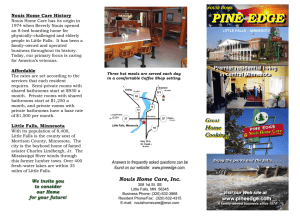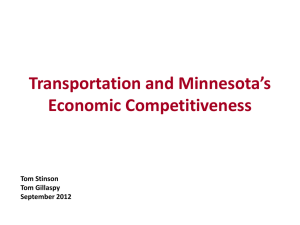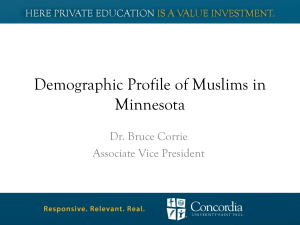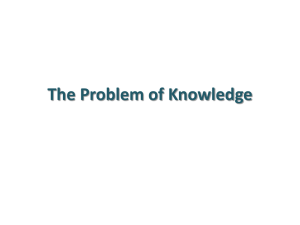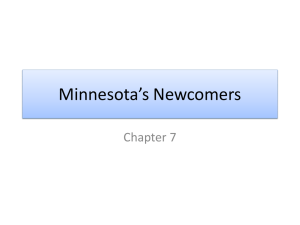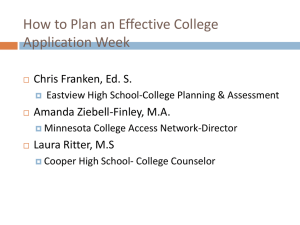Recasting activism in the inner-city
advertisement
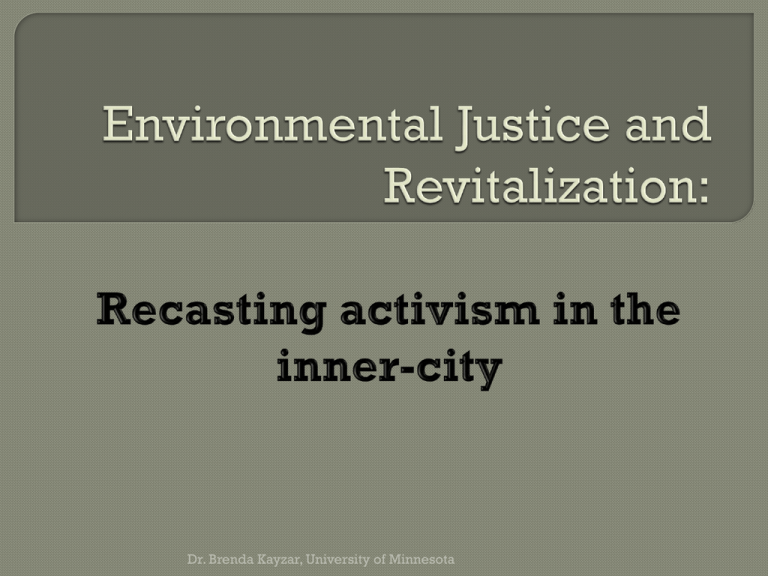
Dr. Brenda Kayzar, University of Minnesota Dr. Brenda Kayzar, University of Minnesota Dr. Brenda Kayzar, University of Minnesota Revitalizing inner-city, transitional landscape • Dichotomous population of very high and very low income households • Each group has very different needs and relationships with the state Dr. Brenda Kayzar, University of Minnesota Higher-income household members empowered with housing choice; lower-income households do not share this characteristic High levels of intolerance toward LULUs by new urban population; lower-income groups more conditioned to accept LULUs due to limited choice and limited political support/representation Dr. Brenda Kayzar, University of Minnesota For lower income households, the language of the environmental justice movement is one of survival The movement seeks protection from injustices that may perpetrate disease or death Dr. Brenda Kayzar, University of Minnesota Recasting employs two meanings: • renewed concern about exposure to environmental degradation in inner city space • repopulating of activist groups seeking redress of seeming environmental injustices Dr. Brenda Kayzar, University of Minnesota Suggests the discourse about potential claims from higher-income residents drew attention to injustices experienced by lower-income residents, enabling a more productive dialog about incompatible land-use solutions Dr. Brenda Kayzar, University of Minnesota Site and event specific focus in environmental justice literature obfuscates the historical importance and remaining material legacy of racial discrimination in the built landscape Pulido (1996, 2000) State apparatus is itself, racialized in practice Kurtz (2009) ** General discussion about past practices and outcomes Comprehending social movements like the environmental justice movement within the context of the state apparatuses they are seeking to dismantle Dr. Brenda Kayzar, University of Minnesota Historical lens shows a multiplicity of economic, planning, and social factors Marrying understandings of how class and race are historically constituted in land use practice in San Diego limits a false conclusion about the benefits or disbenefits of enrolling activism by new higher-income residents Gains from their expected activism may not weigh-out against the disadvantages of displacement for residents in the barrio Dr. Brenda Kayzar, University of Minnesota Freeway by-pass routes Coronado Bridge 17-percent of children in Barrio Logan suffer from asthma compared with 7percent for the region (Lewis, 2005) Dr. Brenda Kayzar, University of Minnesota At least one industrially or commercially zoned lot exists on each of the neighborhood’s 30 residential blocks (Florido, 2009) Dr. Brenda Kayzar, University of Minnesota 129 industries with regulated hazardous materials or wastes are located in Barrio Logan-an area less than 1.2 square miles and with 5,440 residents (EHC, 2004) Dr. Brenda Kayzar, University of Minnesota • A negotiated court agreement prohibits spraying methyl bromide on warehoused produce • A polluting metal plating facility ceased operations • A city ordinance prohibits diesel trucks from travel on some residential streets Unable to obtain a ‘buffer zone’ policy to limit further encroachment Dr. Brenda Kayzar, University of Minnesota Port District representatives request a 1,000 foot buffer zone in adjacent east village… Dr. Brenda Kayzar, University of Minnesota Dr. Brenda Kayzar, University of Minnesota “They fear most the twin 500-foot tall residential towers planned to be snug up against the railroad tracks near the entrance to the rail yard. If approved, they say, it is inevitable that residents of those homes will one day agitate to turn the marine terminal and the giant rail yard into a hospitality-friend place, not one of blue collar jobs…” (McClain, 2005) Dr. Brenda Kayzar, University of Minnesota “What will happen if San Diego’s waterfront is transformed into a gentrified world of expensive high-rise condos and boutiques? Can downtown’s new urban residents co-exist peaceably with the Navy and the waterfront industries that support it?” (Branscomb, 2005) Dr. Brenda Kayzar, University of Minnesota Barrio Logan Community Plan update Scaled back military presence Port District downsizing Revitalization: Live, work, play planning paradigm Environmental Health Coalition, active in Barrio Logan since 1980 Dr. Brenda Kayzar, University of Minnesota State’s regulatory apparatus is represented in the two procedural buffer zone requests in San Diego A history of discriminatory land use practice and experience with differing landscape contexts is represented by the two different demographic groups characterized in each request Dr. Brenda Kayzar, University of Minnesota Rejection of the barrio’s buffer zone demonstrates a racialized state process that significantly devalued the concerns and daily life experience of barrio residents The port’s concern over the environmental expectations and activism of higher-income households demonstrates a racialized state process that maintains a level of white privilege Dr. Brenda Kayzar, University of Minnesota Dr. Brenda Kayzar, University of Minnesota Dr. Brenda Kayzar, University of Minnesota Dr. Brenda Kayzar, University of Minnesota

